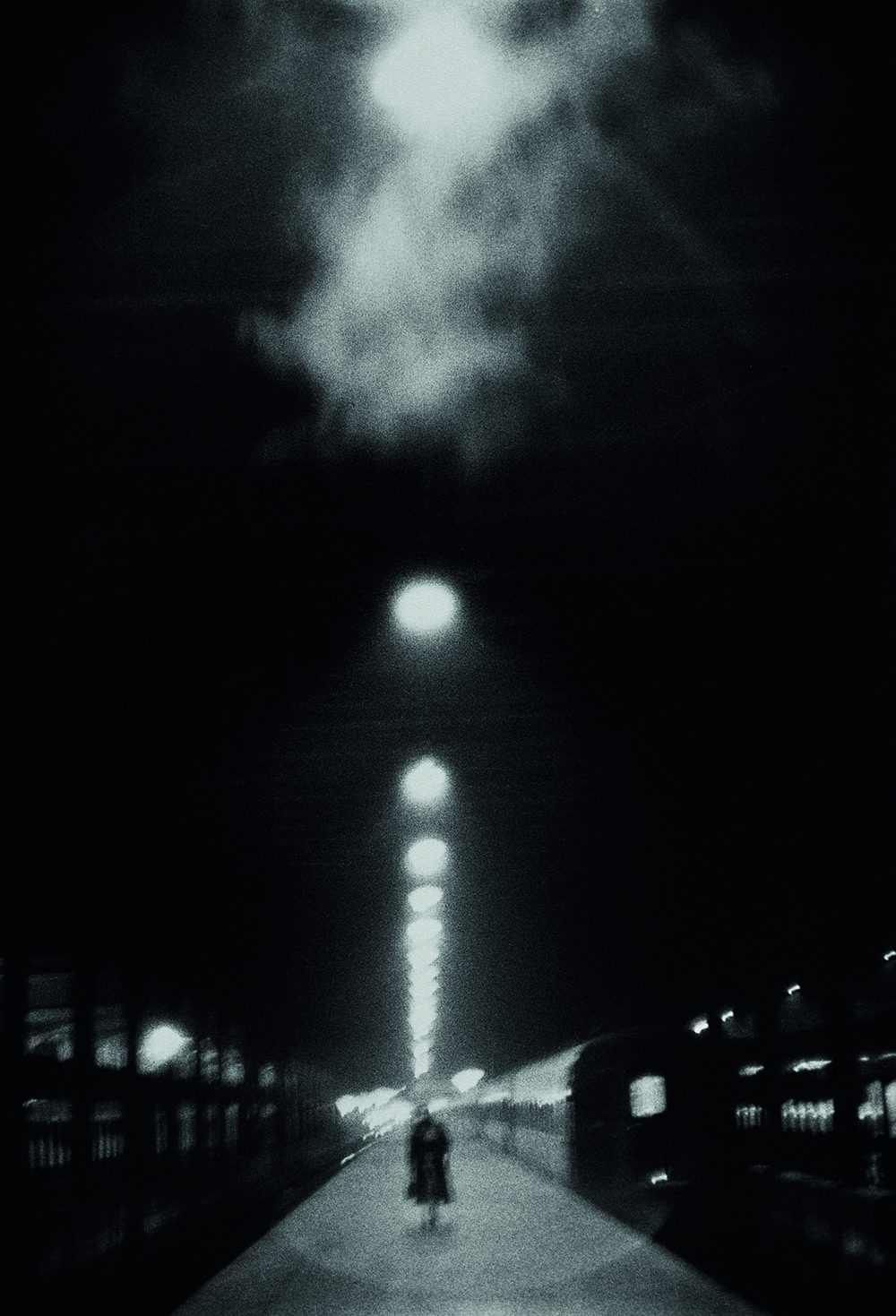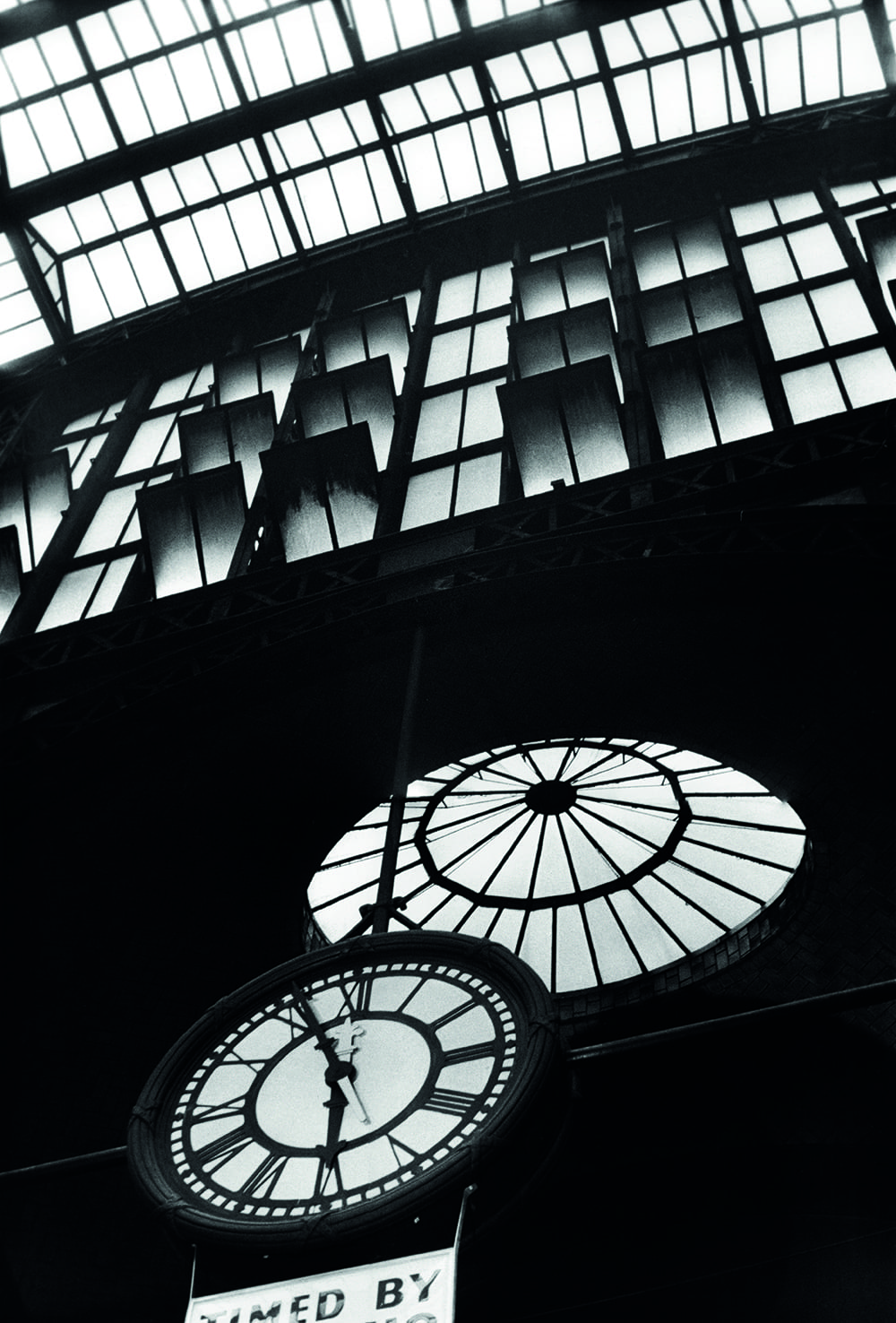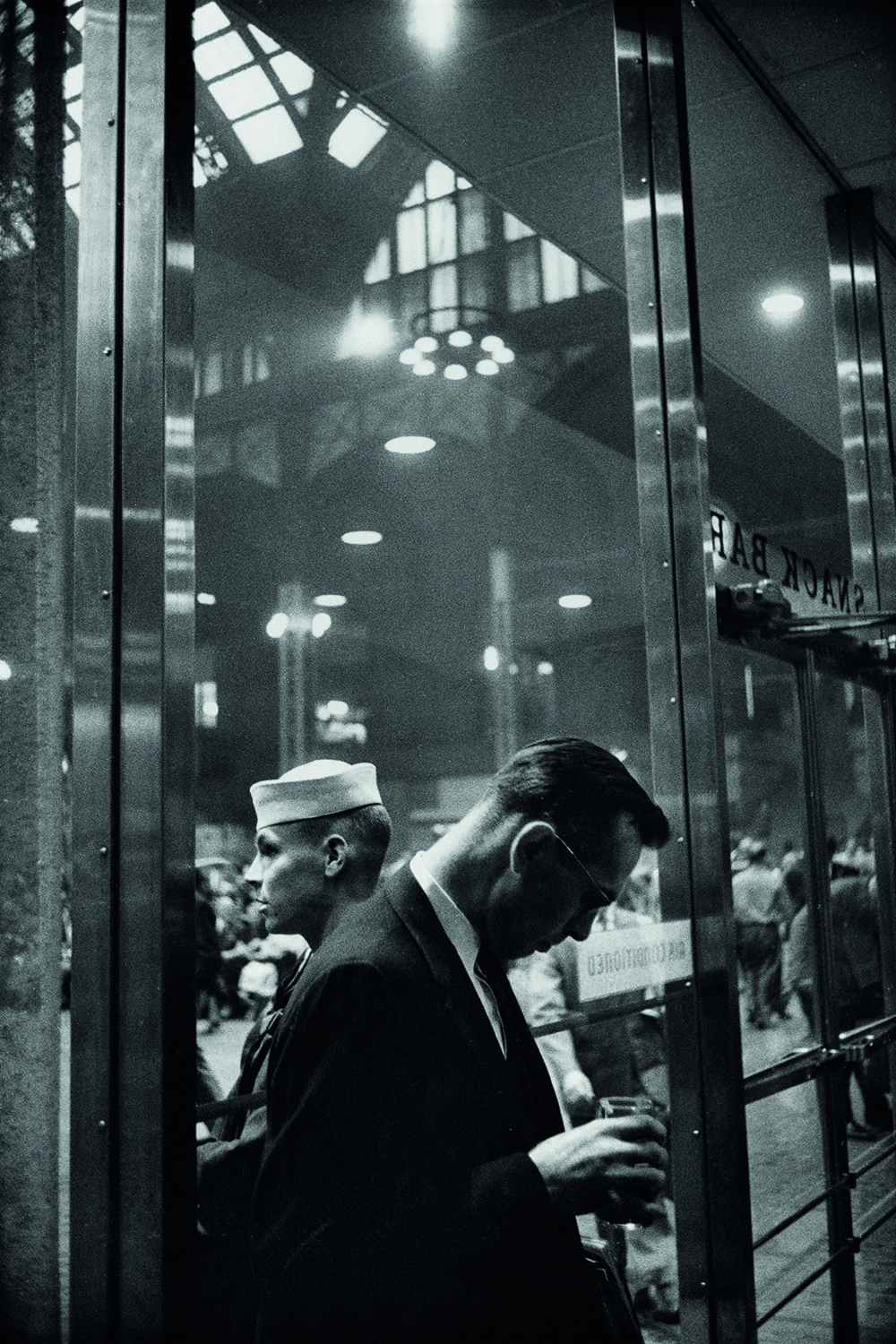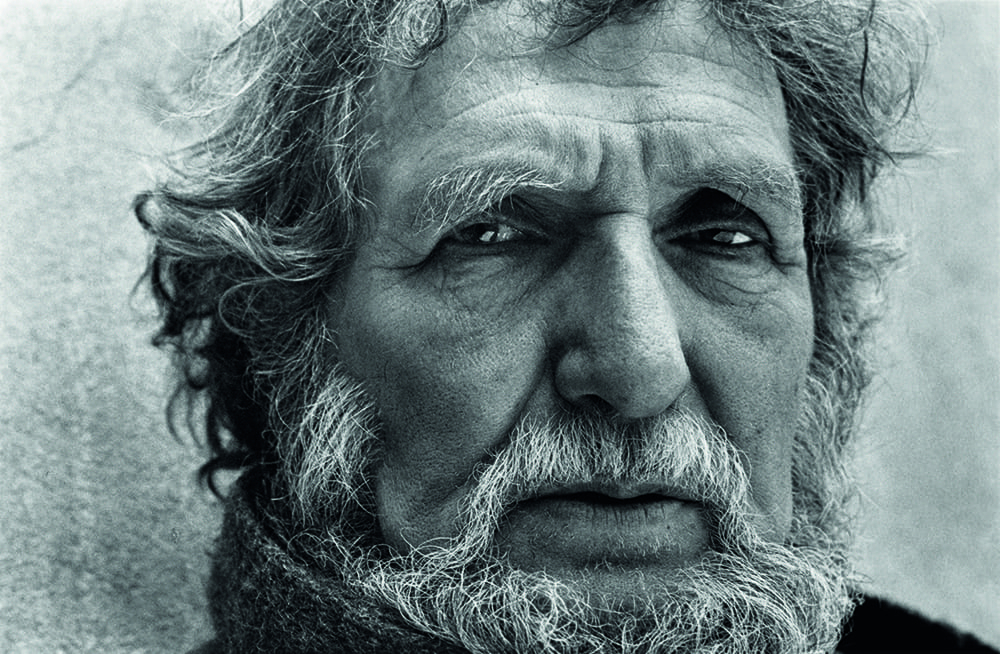A young girl in her Sunday best fixedly follows the pools of light thrown down on the magnificent stone floor, her shadow keeping her company amidst the suits and stoic silence of Penn Station, New York City.
On a commuter train drawing out of the station, a business man curls up for some shuteye, the dark windows framing his exhaustion.
Louis Stettner’s Penn Station, New York, a new photobook from Thames & Hudson, is full of such theatrical composition and voyeuristic opportunism; momentary observations of the working and office classes in post-war America.
“When things work out, it’s like a miracle,” says nonagenarian Louis Stettner, talking from the South of France, from where he’s working on an upcoming nature series.

“I had the light, the camera was very good, a wonderful lens. Film back then was better,” he says. “Today, it would be quite impossible to get permission to photograph in the railway station. A lot of forces came together which made it very favourable.”
If time proves the value of anything, as Stettner has often said, then there’s a certain prophetic poetry to the publication of this series, for the first time and in its entirety, nearly 50 years after Life Magazine snubbed them for not being newsworthy enough.
“Time is the best proof of how valuable a photograph is, or how profound the content is,” Stettner says. “The fact these photographs get more exciting with time is a good sign.”
The series is a handsome example of Stettner’s preoccupation – in a career spanning seven decades – with people going about their everyday lives.
Rather than a simple study of urban melancholy, Stettner captures Penn Station as a place of sanctuary, a space where people could shut out the noise of the city and restore themselves in the most public of places.

“People really got in touch with themselves whilst they were waiting,” he says. “It’s a complex thing, a very profound experience when people travel.”
Stettner’s photography, in that sense, recall the paintings of Edward Hopper; the ability to infuse moments – like a weary lean on a diner counter – to show us what it’s like to transit through one of the busiest intercity railroad stations in the world, to recharge silently in the company of strangers.
With the remodelling of the station in 1963, Stettner couldn’t have known how these photos would become such a precious record of the original station’s majestic Beaux-Arts aesthetic. They remind us now of the halcyon days when public spaces added beauty to everyday lives, designed to give people dignity as they stepped in off the streets.
The redesign, which transformed the station into an underground labyrinth within the Maddison Square Gardens complex, caused public outcry at the time. Yet it was perhaps a necessary nadir for the city, encouraging the protection, further down the line, of beloved monuments like Grand Central Station.

In his introduction to the book, New Yorker journalist Adam Gopnik coins the phrase ‘the delicate moment’ (diverging from Cartier-Bresson’s decisive moment) as being “the moment of maximum inwardness and deliberation, of inner delay” in Stettner’s work.
Stettner himself is a little hesitant of the tag, instead offering ‘the significant moment’.
“I work on intuition,” he says. “If something strikes me as significant, I don’t censor what’s around me. I don’t come with any ideas to impose on reality; I let reality speak to me.”
The most significant image from the series, he suggests, is Odd Man In, a blurred male face cloistered at the back of a standing passenger car, staring through a sea of indifferent businessmen. The man in the photograph seems aware of the camera’s gaze, perhaps curious, perhaps defiant. He is, perhaps, an immigrant new to the city, or a native used to its rhythms.
Whatever his story, he is in many ways a microcosm of a photography series, Stettner suggests, that acts as a metaphor for those who conform, versus those who don’t. This dichotomy allows Stettner’s work to hang together like a John Cassavetes film – a blurred account of late night New York camaraderie and suburban commuter ennui.

Curiously, the impression of time is often misleading here, whilst the dark interiors and heavy shadows suggest a sense of twilight, many of the shots were actually taken in the early morning.
The result is an authentic, raggedly harmonious celebration of a time when Penn Station truly belonged to those who passed through it.
“A city is a real city when it’s for the people that live and work there,” Stettner says. “When it becomes built for tourists, it loses its soul”.
Photography is often now used to highlight the incongruous, to emphasise our separateness from our surroundings. Here, it’s easy to be seduced by such intimate sketches of a time gone by, when anonymous city dwellers whiled their time away in the shadows.
Louis Stettner, Penn Station New York is on sale now from Thames and Hudson, priced at £35. Buy it here.

